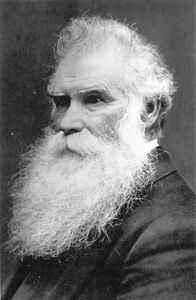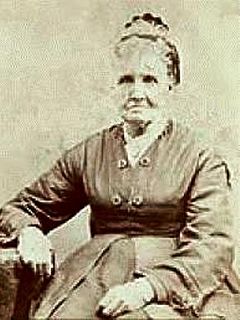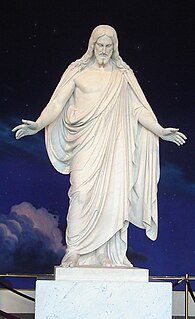Plot summary
The book opens up in 1829 with the desertion of the eight-year-old Dinah and her family by Dinah's father, John Kirkham. After enduring many of the horrors of Industrial Revolution England, Dinah's family begins to prosper. Dinah, her mother Anna, and her brother Charles, are converted to Mormonism. But Dinah's elder brother, Robert, as well as her husband, Matthew, do not convert, leading to a permanent schism in the family. The Mormon Kirkhams emigrate to Nauvoo, where the Mormons are building a city.
In Nauvoo, Dinah—who had to endure an unthinkable sacrifice to come to America—becomes the inspiration for the other women of Nauvoo. She is regarded by many as a Prophetess, and, despite not having the priesthood, bestows blessings on others. She also finds herself drawn to the prophet of the Latter Day Saint Church, Joseph Smith. He teaches her that her husband in England had proven himself unworthy of her by his rejection of the Gospel and by forcing her to choose between God and husband. Joseph introduces Dinah to the still-covert practice of plural marriage, and they are sealed for eternity as husband and wife. Forced to keep secret her eternal union to Joseph causes strains on her relationships with the other women of the town, particularly Emma Smith, Joseph's first wife.
After Joseph's death during his incarceration at Carthage, Dinah uses her influence to help Brigham Young emerge as the new Prophet of the Church, largely because he alone of the potential prophet candidates is determined to uphold the Principle (as plural marriage has come to be known among its adherents). During the Mormon Exodus to Utah, she agrees to become one of Young's wives, with the understanding that their marriage will never be consummated.
Dinah lives to the age of 100, not only outliving all her husbands, but also outlasting the practice of plural marriage, which the Church abandoned in 1890.
Influences
As with many of Card's other literature, a Christian/Mormon influence is present in this book. However, Card explicitly wrote it to appeal equally to Mormon and non-Mormon influences; the book does not seek to proselytize, though it does discuss Mormonism at length.
Orson Scott Card is a descendant of Zina Diantha Huntington. Like the character of Dinah, Zina Huntington was born in 1821, converted to Mormonism and became a plural wife of Joseph Smith (who dissolved her marriage to her first husband). Also like Dinah, Zina Huntington next wed Brigham Young. Unlike Dinah, Zina was American (though Young did marry at least one English bride, Eliza Burgess) and her marriage to Young was consummated; her daughter with Young, also named Zina, was Card's great-grandmother.

Brigham Young was an American religious leader and politician. He was the second president of The Church of Jesus Christ of Latter-day Saints, from 1847 until his death in 1877. During his time as church president, Young led his followers, the Mormon pioneers, west from Nauvoo, Illinois to the Salt Lake Valley. He founded Salt Lake City and served as the first governor of the Utah Territory. Young also worked to establish the learning institutions which would later become the University of Utah and Brigham Young University. A polygamist, Young had at least 56 wives and 57 children. He instituted a ban prohibiting conferring the priesthood on men of black African descent, and led the church in the Utah War against the United States.

Polygamy was practiced by leaders of The Church of Jesus Christ of Latter-day Saints for more than half of the 19th century, and practiced publicly from 1852 to 1890 by between 20 and 30 percent of Latter-day Saint families. Today, various denominations of fundamentalist Mormonism continue to practice polygamy.

Orson Pratt Sr. was an American mathematician and religious leader who was an original member of the Quorum of the Twelve Apostles of the Church of Christ. He became a member of the Quorum of the Twelve of The Church of Jesus Christ of Latter-day Saints and was a leading Mormon theologian and writer until his death.

Celestial marriage is a doctrine that marriage can last forever in heaven. This is a unique teaching of The Church of Jesus Christ of Latter-day Saints or Mormonism, and branches of Mormon fundamentalism.

Polygamy in the Church of Jesus Christ of Latter Day Saints, or plural marriage, is generally believed to have originated with the founder of Mormonism, Joseph Smith. According to several of his associates, Smith taught that polygamy was a divine commandment and practiced it personally, by some accounts marrying more than 30 women, some of whom had existing marriages to other men. Evidence for Smith's polygamy is provided by the church's "sealing" records, affidavits, letters, journals, and diaries. However, until his death, Smith and the leading church quorums denied that he preached or practiced polygamy. Smith's son Joseph Smith III, his widow Emma Smith, and the Reorganized Church of Jesus Christ of Latter Day Saints challenged the evidence and taught that Joseph Smith had opposed polygamy. They instead claimed that Brigham Young, the head of The Church of Jesus Christ of Latter-day Saints, introduced plural marriage after Smith's death. In 1852, leaders of the Utah-based LDS Church publicly announced the doctrine of polygamy.

Zina Diantha Huntington Young was an American social activist and religious leader who served as the third general president of the Relief Society of The Church of Jesus Christ of Latter-day Saints from 1888 until her death. She practiced polyandry as the wife of Joseph Smith, and later Brigham Young, each of whom she married while she was still married to her first husband, Henry Jacobs. She is among the most well-documented healers in LDS Church history, at one point performing hundreds of washing, anointing, and sealing healing rituals every year. Young was also known for speaking in tongues and prophesying. She learned midwifery as a young girl and later made contributions to the healthcare industry in Utah Territory, including assisting in the organization of the Deseret Hospital and establishing a nursing school. Young was also involved in the women's suffrage movement, attending the National Woman Suffrage Association and serving as the vice president of the Utah chapter of the National Council of Women.

Orson Spencer was a prolific writer and prominent member of The Church of Jesus Christ of Latter-day Saints. He served in several highly visible positions within the church and left an extensive legacy of theological writings. Orson Spencer is one of the examples William Mulder cites of highly educated people becoming Mormons during the time of Joseph Smith

Charles Ora Card was the American founder of Cardston, Alberta, the first Mormon settlement in Canada. He has been referred to as "Canada's Brigham Young". Card was a Mormon pioneer as a teenager, traveling from the eastern United States to Utah Territory in the 1850s. After arriving in Utah, he supervised the construction of the Logan Utah Temple, served as a city councilman, and was appointed to the first board of trustees of Brigham Young College. Card was then tasked by leaders in the LDS Church to travel north to Canada and establish a Latter-day Saint colony there. He worked to make the community self-sufficient, participating in irrigation projects. Card was a practitioner of plural marriage, marrying a total of four wives and having sixteen children. He served in leadership positions within the LDS Church, mainly as stake president. He was the spiritual and economic leader of Cardston.

Helen Mar Kimball was one of 30 to 40 plural wives of Joseph Smith, founder of the Latter Day Saint movement. She was sealed in marriage to him when she was 14 years old. After his death when she was 16, she married Horace Whitney "for time"; Whitney was the brother of another of Smith's wives. She bore eleven children with Whitney, the first three of whom died at, or soon after, birth. Their son, Orson F. Whitney, became an apostle in The Church of Jesus Christ of Latter-day Saints.

The life of Joseph Smith from 1839 to 1844, when he was 34–38 years old, covers the period of Smith's life when he lived in Nauvoo, an eventful and highly controversial period of the Latter Day Saint movement. In 1844, after Smith was imprisoned in Carthage, Illinois, he was shot and killed when a mob stormed the jailhouse.

Albert Perry Rockwood was an early Latter Day Saint leader and member of the First Seven Presidents of the Seventy of The Church of Jesus Christ of Latter-day Saints.

Possibly as early as the 1830s, followers of the Latter Day Saint movement, were practicing the doctrine of polygamy or "plural marriage". After the death of church founder Joseph Smith, the doctrine was officially announced in Utah Territory in 1852 by Mormon leader Brigham Young. The practice was attributed posthumously to Smith and it began among Mormons at large, principally in Utah where The Church of Jesus Christ of Latter-day Saints had relocated after the Illinois Mormon War.

Sarah Marinda Bates Pratt was the first wife of LDS Apostle and polygamist Orson Pratt and later a critic of Mormon polygamy. She was a founder of the Anti-Polygamy Society in Salt Lake City and called herself a Mormon apostate. She was born in Henderson, Jefferson County, New York, the first daughter and third child of Cyrus Bates and Lydia Harrington Bates.

Mary Ann Pratt ( was a midwife and early member of the Latter Day Saint movement who was the second wife of Parley P. Pratt, one of the original twelve apostles of the Church of Jesus Christ of Latter Day Saints. She accompanied Parley P. Pratt on several missions, including one to Europe and was instrumental in publishing his writings and poems. Mary Ann joined with the church and followed Brigham Young to Utah with the Mormon pioneers, arriving in Utah Territory in 1852. She is also considered by some to have been one of the plural wives of Joseph Smith the founder of the Latter Day Saint movement. Her life paralleled much of the early history of the church.

The following outline is provided as an overview of and a topical guide to The Church of Jesus Christ of Latter-day Saints.

The following outline is provided as an overview of and topical guide to the life and influence of Joseph Smith:

Zina Presendia Young Williams Card was an American religious leader and women's rights activist. A daughter of Brigham Young, the second president of The Church of Jesus Christ of Latter-day Saints, she was the first "Dean of Women" at Brigham Young Academy (BYA) in Provo, Utah. She fought on a national level for women's suffrage and the right to practice plural marriage. After moving to a new Mormon settlement at Cardston, Alberta, Canada, she became a major civic and religious leader of the community.














